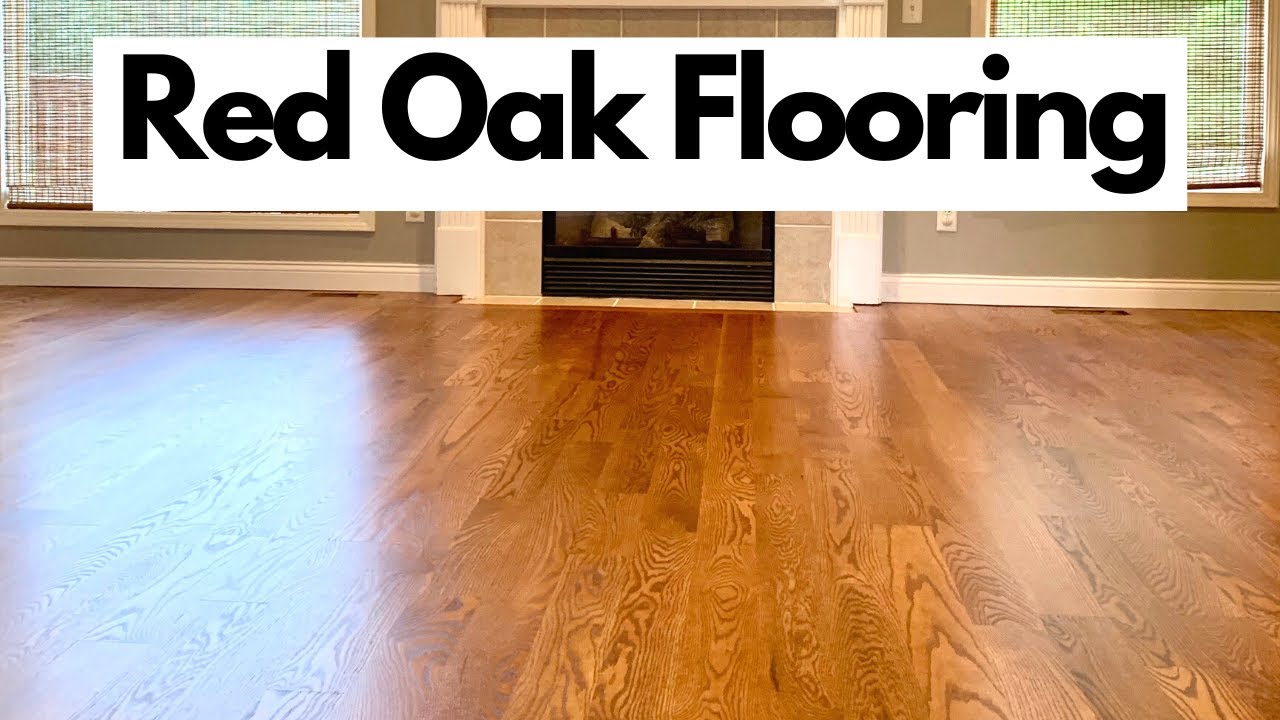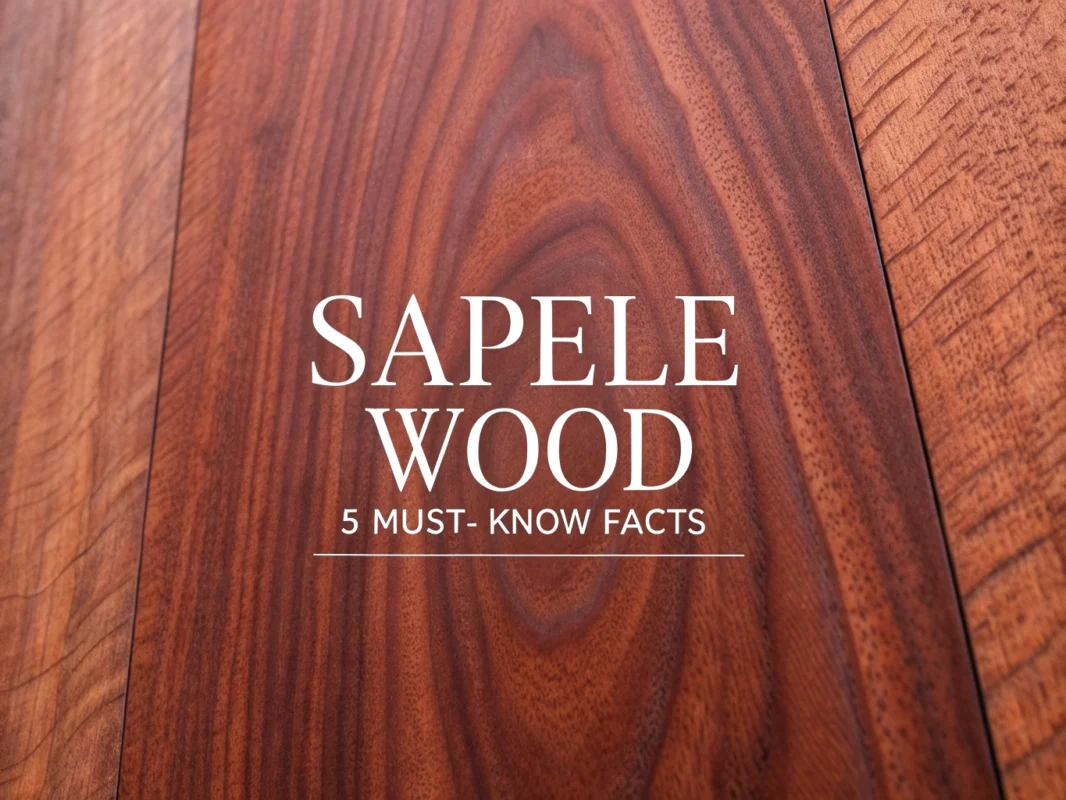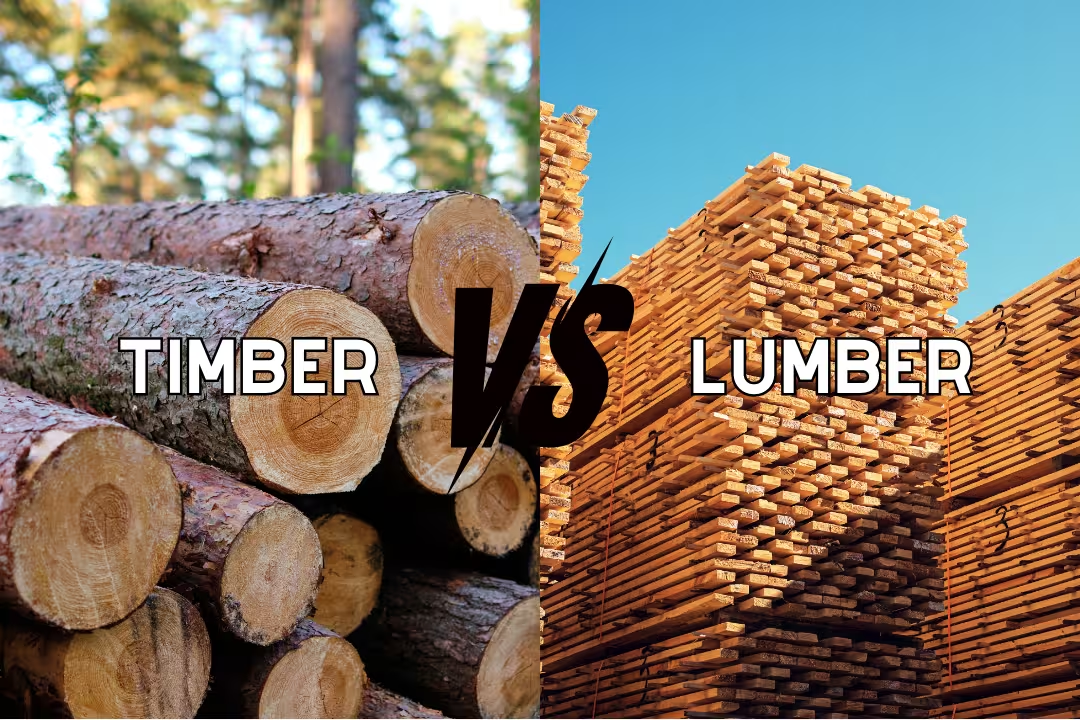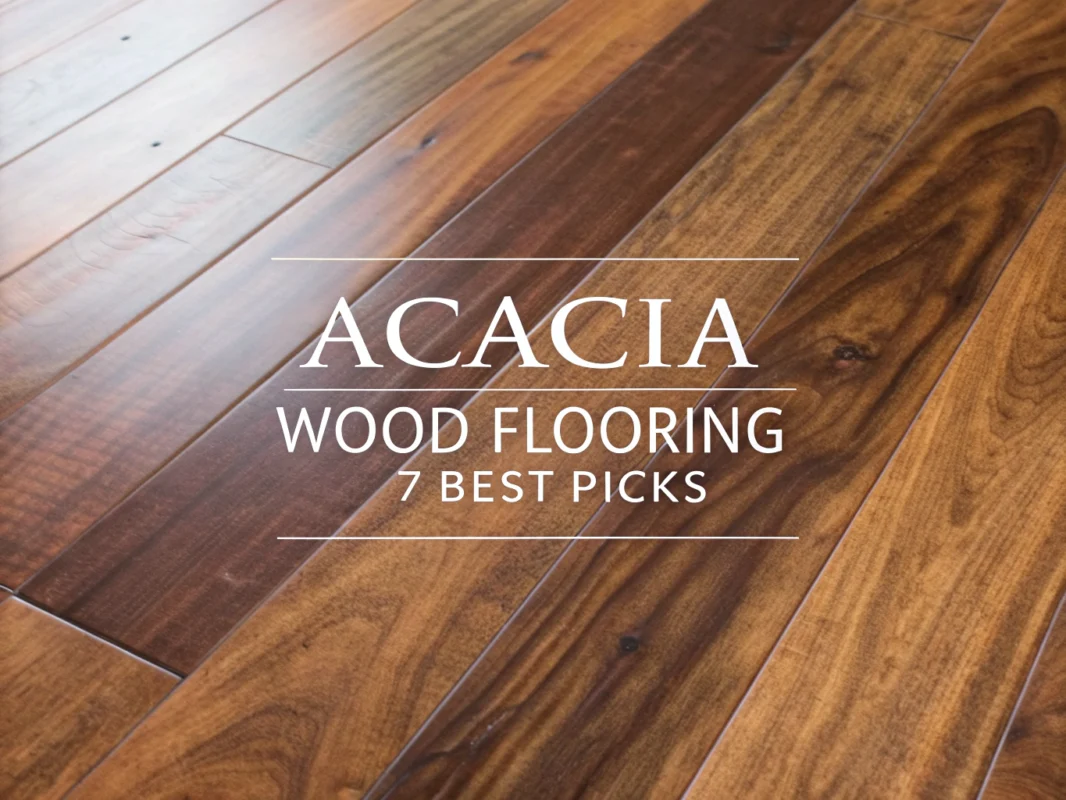
Red Oak Wood Flooring: 5 Top Picks

Ever wonder why so many homes pick red oak wood flooring? It brings warm color, easy staining, and friendly pricing. Below, you’ll see 5 smart picks for 2025, quick costs, care tips, and how it stacks up against white oak wood flooring. We even cover fixes, from filler to tape, and where red oak lumber helps with trims and repairs.
Table of Contents
Red oak wood flooring delivers warm color, visible grain, and a price that often lands $1–$2 per square foot below white oak, making it a smart pick for value and style. It accepts stain evenly, hides everyday wear, and adapts to traditional and transitional rooms without stress or special prep.
Red oak wood flooring overview
Color and grain
Red oak shows warm undertones with subtle pink or reddish hues that read cozy and welcoming. The grain is pronounced and varied, with cathedral arches and swirls that add movement under natural light. This character masks minor scratches and crumbs far better than tight-grained species, so daily life looks cleaner even between deep cleans.
I like how the open grain gives stain more places to settle, creating rich dimension even with light finishes. If you want more background, this color and grain profile aligns with guidance from Bruce’s red vs. white oak overview, which spotlights the warmer cast and classic figure that many homeowners prefer.
For a quick primer on species traits, see this concise guide to red oak wood; it’s a helpful anchor if you’re comparing samples. Pair that with a few boards under your room’s actual lighting to judge how the warm undertones read across the day.
Hardness and durability
On the Janka scale, red oak clocks in around 1290, which sits squarely in the durable household range. It handles foot traffic, kids, and pets with ease, and its busy grain disguises scuffs that would pop out on smooth, tight-grained floors. While it’s slightly less dense than white oak, the difference feels minimal once you add a tough finish.
Moisture control matters more than brute hardness. Wipe spills when they happen, use door mats, and maintain a steady indoor humidity. Those small steps do more to preserve a floor’s edge joints and finish integrity than a few extra points on a hardness chart.
Cost snapshot
Red oak typically runs about $1–$2 per sq. ft. less than comparable white oak in the same grade and width. For a 700 sq. ft. project, that’s a $700–$1,400 material swing before labor or finish. Those savings can fund better underlayment, wider planks, or a pro-grade finish that extends the time between full refinish cycles.
Engineered options track a similar gap, though core quality, veneer thickness, and brand can compress or widen it. Solid red oak in common widths (2¼ in., 3¼ in., 4 in.) often lands in the sweet spot for cost, longevity, and repair flexibility.
Best room styles
Traditional rooms love red oak’s warmth and movement; think millwork, trim, and historical color palettes. Transitional spaces benefit from the grain complexity but keep lines clean with wider planks and simpler furniture profiles. For modern-leaning spaces, choose straighter-grain cuts, a matte finish, and cooler stain to dial back the pink tint without losing the classic character.
For a deeper comparison on species choice by interior style, this short breakdown on red oak vs. white oak covers color temperatures and common installs. Use those pointers to pick widths and finishes that match your home’s architecture and light levels.
5 top picks for 2025
1. Red oak peel-and-stick
These peel-and-stick vinyl planks offer a quick face-lift with a realistic red oak grain and a waterproof wear layer. I reach for this option in rentals, basements, or budget refreshes where fast installation and easy trimming matter more than long-term refinishing. Use a sharp utility knife, roll the seams, and stagger end joints for a convincing layout.

Red Oak Peel and Stick Vinyl Planks, 36x6, 18 Sheets
- DIY installation with strong self adhesive backing
- Waterproof and scratch resistant for busy areas
- Realistic red oak grain refreshes floors instantly
- Thick, comfortable vinyl stands up to daily wear
- Trim to fit and removable, great for rentals
2. Red oak lumber
Small packs of red oak lumber are perfect for custom thresholds, border inlays, or stair nosing to match existing floors. I use them for patching old radiators cutouts or weaving new boards into an original floor because they machine cleanly and take stain well. Keep end grain sealed while you test stains so color samples read true.

Red Oak Lumber, 3/4 x 2 x 12, 4-Pack
- Solid hardwood pieces for DIY and woodworking
- Smooth, uniform boards for consistent results
- Machines, sands, and stains beautifully
- Ideal for small projects, trim, and craft work
- Straight sizes for easy cutting and joinery
3. Floor register damper
An unfinished red oak register with a damper blends into your floor once stained and sealed, while giving you airflow control. I prefer drop-in registers for simple swaps and easy cleaning; remove them during sanding and finishing to keep edges crisp. Stain them alongside your main boards for a perfect match.

Red Oak Floor Register with Damper, 4x10, Unfinished
- Red oak vent complements hardwood floors
- Built in adjustable damper controls airflow
- Unfinished surface stains to match your floor
- Drop in design fits standard 4x10 openings
- Removable for easy cleaning and maintenance
4. Wood filler kits
These red oak fillers handle nail holes, gaps, and the open grain that shows up after sanding. I keep multiple formulas on hand since repairs vary: trowel-grade for seams, water-based for quick tinting, and solvent-based for tough wear areas.
Here are three proven picks for plugging small flaws and evening out grain:

Goodfilla Red Oak Wood Filler, 8 oz
- Stainable and tintable for spot on color matches
- Sands smooth and accepts finish like real wood
- Water based, low odor, non toxic formulation
- Rehydrates to eliminate waste and extend shelf life
- Fills grain, cracks, and nail holes cleanly

Rust-Oleum Pro Floor Filler, Red Oak, Quart
- Trowel grade filler for hardwood floor gaps and seams
- Red Oak color blends for uniform repairs
- Sands easily for a flat, ready to stain surface
- Low shrinkage for long lasting, stable patches
- Accepts stains and finishes for a seamless look

DAP Plastic Wood Latex Filler, Red Oak, 6 oz
- Dries hard and durable for strong repairs
- Stainable and paintable to match surrounding wood
- Sands, drills, and shapes like real wood
- Easy water cleanup with low odor application
- Ideal for holes, gouges, and edge repairs
5. Grain repair tape
This flexible repair tape covers long scratches, chipped stair nosings, or inside-corner tears that would otherwise need patching. I use it as a temporary camouflage before a full refinish or to blend a client’s furniture mishap before big events. Cut it to size, heat it lightly with a hair dryer to help conform, and burnish the edges.

Red Oak Wood Grain Repair Tape, 2.4 in x 15 ft
- Self adhesive tape covers scratches, chips, and seams
- Red oak grain pattern blends with furniture and floors
- Cut to size for tables, doors, baseboards, and more
- Strong adhesion with flexible, conforming backing
- Quick DIY fix with durable, wear resistant surface
Key features and benefits
Versatile staining
Red oak’s grain accepts stain evenly, so you can hit nearly any palette—from airy neutrals to deep espresso. The open pores take pigment with ease, and the natural figure keeps even light stains from looking flat. That flexibility is perfect if you want to adjust color down the road without swapping the floor.
Scratch concealment
The lively grain hides scuffs and micro-scratches that stand out on glassy, fine-grain floors. High-traffic zones like entries and kitchens look presentable longer between maintenance coats, which makes day-to-day care less intense. Felt pads under chairs and a runner at the sink go a long way on any species; red oak simply gives you more forgiveness.
Budget-friendly
Expect a material gap of roughly $1–$2 per sq. ft. versus white oak in similar grades. That difference compounds fast on whole-floor installs, giving you room for better finishes or wider boards that visually calm the space. See this concise price comparison from Castle Bespoke Flooring, which mirrors typical retail quotes.
DIY-friendly
From peel-and-stick planks to unfinished boards, options abound for every skill level. Red oak mills cleanly, glues well, and responds predictably to sanding grits, so you can run test panels and dial in a finish that suits your room. For specialty looks with straighter figure and fewer cathedrals, consider quarter-sawn oak to tighten the grain and add medullary ray fleck.
Repairability
Filler availability, easy color matching, and wide stock make red oak repairs straightforward. You can replace individual boards, plug old fastener holes, or tint filler to blend a corner patch without replacing a whole room. That serviceability keeps long-term ownership costs in check.
Red oak vs. white oak wood flooring
Both species produce outstanding floors; the right choice hangs on color, grain preference, moisture exposure, and budget. I use the chart below as a quick spec snapshot for clients, then adjust the final call based on room conditions and design goals, referencing guides like Hartco’s comparison.
| Feature | Red Oak Wood Flooring | White Oak Wood Flooring |
|---|---|---|
| Natural color | Warm pink/reddish undertones | Beige to brown, often cooler/yellow-brown |
| Grain pattern | Pronounced, wavy, varied; hides marks | Fine, straighter, tighter; sleek look |
| Hardness (Janka) | ~1290 | ~1360 |
| Moisture tolerance | Moderate; quick spill cleanup advised | Higher water/rot resistance |
| Typical cost | Lower by ~$1–$2/sq. ft. | Higher; premium trend appeal |
| Best fits | Traditional and transitional interiors | Modern, coastal, and entry-heavy areas |
Color tones
Red oak leans warm by nature, which plays nicely with beiges, terracotta, and brass finishes. White oak reads cooler and more neutral, especially under natural finishes, so it pairs well with grays, blacks, and steel. Both species can swing cooler or warmer with stain, but their base tone still shows through slightly.
Grain look
Red oak’s cathedrals and varied figure add movement and do a great job hiding crumbs and scuffs. White oak tends to be straighter and tighter, delivering a sleeker canvas that highlights long plank runs. If you want less cathedral and more line, consider rift/quarter cuts in either species.
Hardness and durability
White oak’s modest Janka edge shows up most in high-abuse spaces and areas with more moisture. That said, a strong finish and proper humidity control protect both species well in typical homes. I choose finish systems for the room first, then pick species once the performance target is set.
Cost difference
Red oak usually wins on price and availability, especially in common widths and grades. The ~$1–$2 per sq. ft. gap gives you flexibility for upgrades like underlayment or a top-tier waterborne finish, which can deliver more real-world durability than a slightly harder species alone.
Best use cases
Pick red oak for classic interiors, projects on a budget, and rooms where grain activity helps mask wear. Choose white oak for modern lines, high-traffic entries, and spaces where neutral baseline color helps balance cool palettes. If you’re weighing both, this brief guide on red vs. white oak is a simple starting point.
Design styles and applications
Traditional homes
Red oak’s warm cast and active grain fit classic interiors with crown molding, wainscoting, and paneled doors. A mid-brown stain with a satin topcoat brings out the cathedrals without going too glossy. Widths from 2¼ to 3¼ inches echo period floors while staying easier to source and repair.
Transitional spaces
In mixed-style rooms, I aim for light to medium stains and a low-sheen finish for a calm, updated look. Wider planks (4–6 inches) reduce visual seams, while the open grain still adds interest. Black hardware, matte fixtures, and red oak in a neutral stain create a balanced, current feel that doesn’t date quickly.
For more color and tone examples across species, see Rejuvenation’s red vs. white oak guide for useful photos across finishes. It illustrates how stains shift each wood’s base temperature in different lighting scenarios.
DIY custom layouts
Border inlays, herringbone, or picture-frame details show beautifully in red oak because the grain contrast highlights pattern edges. Use straight-grain pieces for borders and cathedral-heavy boards inside the field for extra drama. Keep layout lines squared off the longest wall, and dry-fit a few rows before committing with nails or adhesive.
If you want to compare color next to neutral-toned wood, viewing samples against white oak wood can sharpen your pick. A few minutes in morning and evening light tells you more than any showroom.
Maintenance and upkeep
Routine cleaning
Daily grit does most damage, so I sweep or vacuum with a soft head and use a damp microfiber mop weekly. Keep mats at entries, add felt pads under chairs, and rotate rugs to even out UV exposure. Skip steam mops and harsh cleaners; a pH-neutral wood floor cleaner protects the finish without haze.
Scratch and gap fixes
Minor scratches disappear with blending pencils or a wax fill stick; deeper scars accept tinted water-based filler sanded flush. Seasonal gaps shrink in humid months and widen in dry months; I leave small movement alone but fill persistent seams with trowel-grade filler before a refinish. For quick cover-ups, repair tape helps until a planned maintenance coat.
Refinishing and sealing
Red oak sands cleanly and takes both oil-modified and waterborne finishes. I favor high-quality waterborne urethanes for durability, clarity, and low odor, but oil-modified urethanes give extra warmth. Because red oak is a bit more porous, clean spills quickly and keep a stable indoor humidity, advice echoed by Plus Hardwood’s maintenance tips.
If you’re mixing species at thresholds or stairs, you can transition into rift-cut white oak for a straighter grain without clashing. Use stains to unify color, and keep sheen consistent across connected rooms for a clean flow.
Stain and finish options
Finish types
Waterborne urethane delivers a clear, fast-drying topcoat with excellent abrasion resistance and low odor. Oil-modified urethane ambers over time, adding warmth that pairs well with red oak’s base tone. Hardwax oils offer a hand-rubbed feel and local repair ease but ask for regular maintenance coats, which some homeowners prefer for patina.
Stain shades
To keep things airy, look at natural, raw-effect, or light beiges that soften pink undertones. For a classic look, mid-browns like Special Walnut or Provincial bring color balance without hiding grain. Deep tones—Jacobean, Espresso—add drama; water-pop the grain before staining to reduce lap marks and get even penetration.
Recommended stain
For a versatile, warm option that flatters red oak, this classic stain is reliable and easy to control on large floors. Test in three light levels—morning, noon, and evening—to judge whether your space wants a lighter or darker tone before committing.

Minwax Wood Finish Stain, Red Oak, Quart
- Penetrating oil based stain enhances natural grain
- Classic Red Oak tone for warm, even color
- Wipe on, wipe off application with easy control
- Works on furniture, trim, doors, and floors
- Topcoat ready for durable protection and sheen
If you want a cooler baseline before stain, test a neutral sealer as the first coat to reduce warmth, then tone with color in the second layer. This trick keeps grain visible while tempering the red oak undertone.
Essential accessories
Floor register options
Matching registers make a big impact on a finished floor. I keep a damper style for rooms where I need airflow control and a simple open design for maximum flow in larger spaces or systems balanced elsewhere.
Here are two register choices that finish clean and accept stain to match your floor:

Red Oak Floor Register with Damper, 4x10, Unfinished
- Red oak vent complements hardwood floors
- Built in adjustable damper controls airflow
- Unfinished surface stains to match your floor
- Drop in design fits standard 4x10 openings
- Removable for easy cleaning and maintenance

8-Pack Red Oak Floor Registers, 4x10, Unfinished
- Set of 8 covers multiple rooms or replacements
- Surface mount design fits standard 4x10 openings
- Unfinished wood stains to match your floor
- Open flow design without damper for maximum airflow
- Easy drop in installation with a clean look
Pre-finish your registers alongside the field boards for a seamless color match. Don’t forget to remove them during final buffing to keep edges sharp and free of swirl marks.
FAQs
How Durable Is Red Oak Wood Flooring Compared To White Oak?
Red oak is a very durable hardwood for everyday residential use. On the Janka hardness scale it averages around 1,290, while white oak is about 1,360, so white oak is slightly harder and naturally more moisture resistant due to its tighter, closed grain. With a quality finish and normal care, red oak stands up well to foot traffic, pets, and minor dents and can last for decades.
What Are The Pros And Cons Of Red Oak Wood Flooring?
Pros: warm, pronounced grain and classic character; takes stain very well for a wide range of colors; widely available and typically more budget friendly than white oak; easy to sand and refinish multiple times; great for matching existing trim and stairs. Cons: a bit less water resistant than white oak because of its more open grain; subtle pink/red undertones can influence cool gray stains; not ideal for consistently wet areas like bathrooms; can show grain texture and wear more visibly with very glossy finishes.
How Do I Maintain And Clean Red Oak Hardwood Floors?
Sweep or vacuum with a soft-brush head regularly to remove grit. Damp mop with a lightly misted microfiber pad and a pH-neutral hardwood cleaner—never soak the floor, use steam mops, or harsh chemicals. Wipe spills right away, use doormats and runners, and add felt pads to furniture. Keep indoor humidity around 35-55% to minimize seasonal movement. When the finish looks dull but the wood is intact, do a screen-and-recoat; reserve full sanding and refinishing for deep scratches or wear.
Is Red Oak Flooring Suitable For Kitchens And High-Traffic Areas?
Yes-when properly finished and maintained, red oak performs well in kitchens and other high-traffic spaces. Choose a high-quality finish such as factory-applied aluminum oxide or a commercial-grade waterborne polyurethane, and use rugs at sinks and entries. Wipe up spills promptly, avoid standing water, and control humidity. For homes with frequent moisture exposure, white oak remains the more moisture-resistant alternative, but red oak is a solid choice for most kitchens.
Can You Refinish Red Oak Floors Multiple Times?
Usually, yes. Solid 3/4-inch red oak can often be sanded and refinished 4-6 or more times over its life, depending on past sanding and nail placement. Engineered red oak depends on its wear layer: around 2 mm typically allows 1 light sanding, 3-4 mm allows 1-2, and 5-6 mm may allow up to 2-3. In between full sandings, a screen-and-recoat can refresh the finish without removing wood; have a professional confirm remaining wear layer before refinishing.












